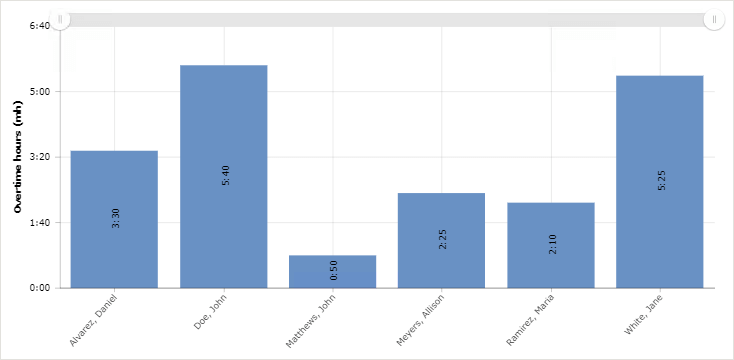
Tracking the time of hourly employees is a common practice. Detailed records of hours spent on tasks help employers calculate how much they must pay to this group of workers. Besides, time tracking, in this case, is a guarantee of compliance with overtime regulations under the Fair Labor Standards Act (FLSA), which legally entitles hourly employees to be compensated for each hour spent at work beyond the standard 40-hour week. In other words, timesheets for salaried employees are a means to control labor costs and prevent legal risks.
As for time tracking among salaried employees, its purposes and benefits are not so obvious. Salaried workers receive a fixed amount of money every month and are usually not eligible for overtime compensation. Therefore, if those employees get their job done, why would employers need to bother making them fill in timesheets daily?
In this article, we have listed eight reasons for doing that, demonstrating that time tracking produces multiple benefits not only when applied by hourly workers but by salaried ones alike.
Benefits of Timesheets for Salaried Employees
1. Billing Time and Labor Costs Tracking
Timesheets are essential for collecting information on billable hours and for consequent invoicing. With the aid of timesheets, you increase the accuracy of the billing procedure. Besides, time track data serves as hard evidence for showing customers how much time you spent on work for them and how much money is due to be paid for that work.
The process of billable time tracking is straightforward with digital timesheets. For example, in actiTIME, you can build billing reports with billable time and amounts across teams, customers, or projects.

Additionally, you may utilize digital timesheets to gather data regarding labor costs incurred by your business. To do so in actiTIME, firstly, you should divide your salaried employees’ monthly wages by the number of hours worked to identify their hourly rates. Then, you will need to set up workers’ fee rates in their user accounts and, after enough time tracking data is submitted, run the Cost of Work Report or the Profit/Loss Report.
The latter allows for overseeing labor costs in real time and comparing them with business revenues (based on billable amounts calculated). Therefore, the Profit/Loss Report helps always stay in the know of how much money the company spends on employees, regardless of whether they are hourly or salaried, and monitor expenses more efficiently.

Profit/Loss Report in actiTIME
2. Calculating Overtime and Time Off in Lieu
Although the majority of salaried employees are exempt from the FLSA, according to the new rule, those who earn less than $47,476 per annum are still entitled to be compensated for overtime work. Failing to track the working hours of such employees, you face an elevated legal risk due to non-compliance with fair labor standards and laws. Conversely, with detailed timesheet records and proof of provided overtime pay, you will protect yourself from any legal suits and charges filed by unsatisfied and overworked employees.
As for those salaried workers whose annual wages are higher than $47,476, you may find other ways to compensate them for their extra efforts. One of them is the accrual of time off in lieu (TOIL) in the amounts proportional to the number of hours an employee spent staying late at work.
Just like in the case of overtime monitoring, time off accrual is always easier when automated. Therefore, you can largely benefit from implementing a digital tool with an option to set up custom overtime and time off accrual rules. In actiTIME, you may also monitor how many overtime hours each of your team members worked over a certain period in an informative and easy-to-read chart.

3. Leave Balance Monitoring
In case your timesheets are designed in a way that allows for the collection of data on vacation, sick leave and other kinds of time off taken by employees, timesheet data may be applied not just for TOIL accrual but also for calculating and monitoring employees’ leave balances in general.
While regular timesheets are handy in this regard, software tools with built-in mechanisms for leave balance accrual make the process even more effortless and efficient. In actiTIME, you can review how many days your workers have already taken and how many are left in their balances. Such a feature is an excellent time-saver for team managers and payroll professionals.

4. Accountability Promotion
While promoting employers’ accountability in figuring out overtime pay and time off monitoring, timesheets also increase employees’ level of responsibility. The demand to keep daily records of hours spent on different tasks motivates one to engage in work and present favorable outcomes in a timely manner. In contrast, without a well-established time tracking procedure, your salaried employees may tend to procrastinate and slack on their jobs, especially when managers are not on site.
So, timesheet data often serves as soft evidence in terms of team progress assessment – it doesn’t reflect the actual work results but simply indicates whether your workers are actively performing their duties and utilizing work time in an optimal way. Thus, time tracking is an excellent way to hold salaried employees accountable for their output on an ongoing basis before checking on their actual performance outcomes.
5. Superior Project Management Results
With accurate work time records, the efficacy of your project management may increase multifold, and there are three main reasons for that:
- Firstly, you can foster better cost tracking (which we have already discussed above). In its turn, improved control over expenses stimulates better adherence to budgets and prevents the risks of cost overruns.
- Secondly, time tracking data is valuable when evaluating your current workforce capacities and resource allocation strategies, and planning future ones. Looking at time track records, you can identify which tasks are performed as planned and which consume too many hours. Such an analysis is conducive to more educated managerial decisions. More precisely, with this knowledge, you’ll be able to optimize resource allocation, concentrating attention and efforts on the areas where they are needed most.
- Lastly, time tracking enables you to oversee employee adherence to time estimates and schedules. As a consequence, you will be able to assess not only your team’s work progress but also the quality of your approach to time estimation. The latter is especially vital since inadequate time estimation is among the leading causes of project failures. By analyzing your team’s performance and compliance with initial schedules, you can increase time estimation accuracy, plan your projects more efficiently, and avoid severe risks.
6. Productivity Boosting
Measuring productivity for teams and individuals is not an easy task, but timesheets for salaried employees can be of significant assistance here. As it was said before, time tracking provides data necessary to figure out which activities are time-consuming and which are easy to complete on schedule. Thus, time track data educates on actions needed to optimize daily routines and increase performance efficacy at the project and individual levels.
When scrutinizing time logs, one may reveal some barriers to productive performance that could be eliminated only with the involvement of other staff members or management: e.g., redistribution of workloads for greater personal and team efficiency or recruitment of new talents to minimize the risk of staff burnout. But besides, employees can always analyze their work time records to develop a more mindful approach to personal work time distribution.
Having a chart that shows ongoing performance results is helpful for those working on their productivity. Digitized timesheet data may depict ratios between scheduled and worked hours, and show statistics on overtime and delayed outputs. Thus, with a timesheet tool like actiTIME, one will always be aware of their performance progress and have all the data necessary for better productivity gains at hand.

7. Additional Information for Employee Appraisal
Historical data from timesheets for salaried employees informs employee appraisal. Did an employee frequently pull all-nighters and put in an extra effort to meet the impending deadlines? Did they show consistent results in terms of adherence to time estimates? Did they spend a reasonable amount of time on tasks or, on the contrary, utilize too many hours on trivial activities? Time-track data shows it all.
Asking your salaried workers to fill in timesheets daily, you gain a chance to identify underperformers, achievers, and overachievers by analyzing their time logs. In this way, you will have an opportunity to recognize employee contributions with greater ease, stay more attentive to those who excel at work, and undertake appropriate and prompt measures to promote more efficient organizational behaviors.
8. Evidence for R&D Tax Credit Approval
Taking advantage of the research and development (R&D) tax credit is another valid reason why companies with salaried staff prefer keeping track of time expenses.
People tend to think that only research labs or large innovative corporations are eligible for the R&D tax credit. However, any business with research or experimental development projects can qualify for this incentive if they provide sufficient evidence to support their claims.
As you have probably guessed, the tracking of project time expenses is one of the easiest ways to do that. If you’re using an advanced timekeeping tool that allows for running reports on your employees’ work hours, you can get an automatically developed document representing your team’s R&D activities in a detailed breakdown. For an even more comprehensive and accurate picture, you may elaborate your time expense reports with information on work steps, assignments, and tasks of your R&D project.

Ready to Introduce Timesheets for Salaried Employees?
Timesheets for salaried employees produce multiple advantages. While not influencing the amounts of these workers’ monetary compensation directly, timesheets assist in obtaining data crucial for accounting, HR and project management.
If you are looking to get all these benefits in your team, try introducing timesheet software. For example, in actiTIME, your team can register working hours across tasks in the online timesheet, the browser extension, or the mobile app. You as a manager can use real-time widgets, charts, and reports to review individual and team productivity, project performance, build bills, and cost reports. Explore the whole set of actiTIME’s benefits – start a free 30-day trial (no credit card required).












































